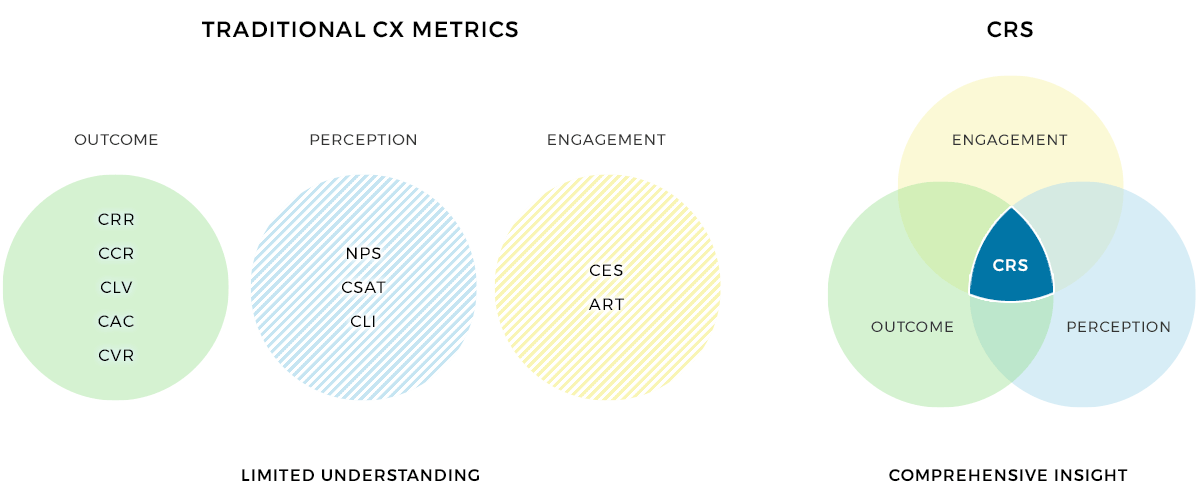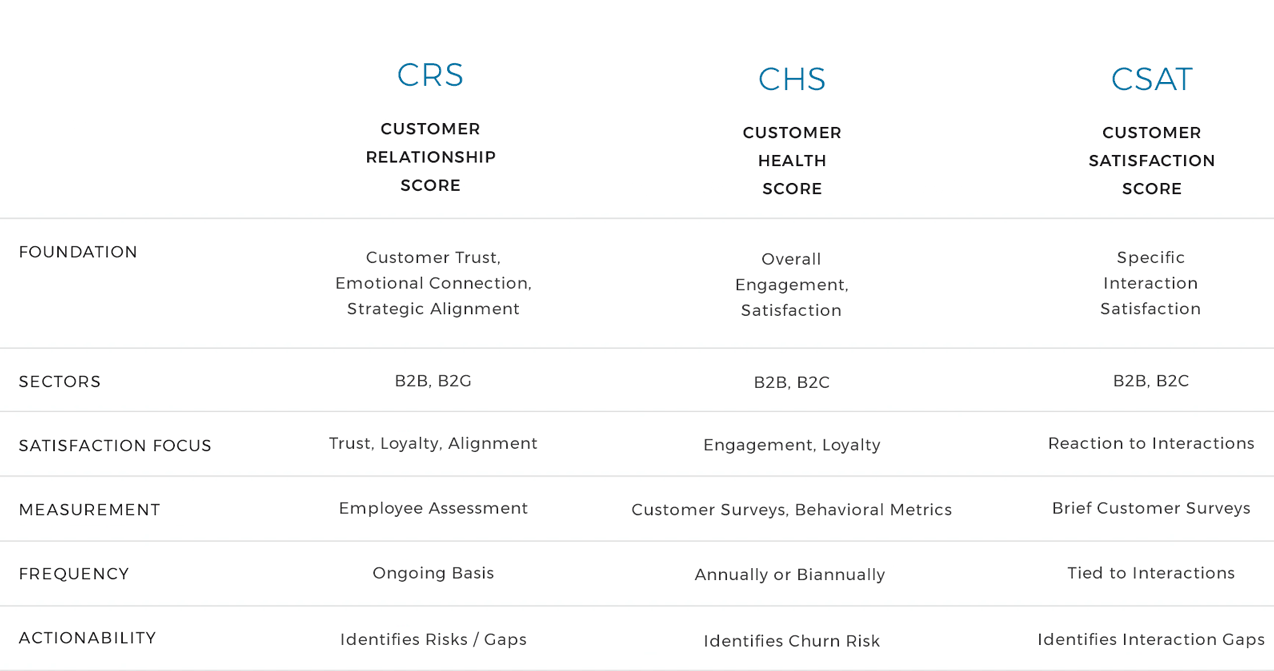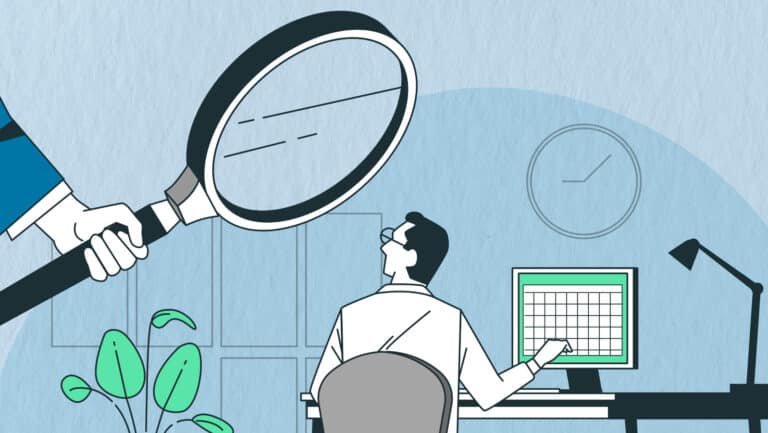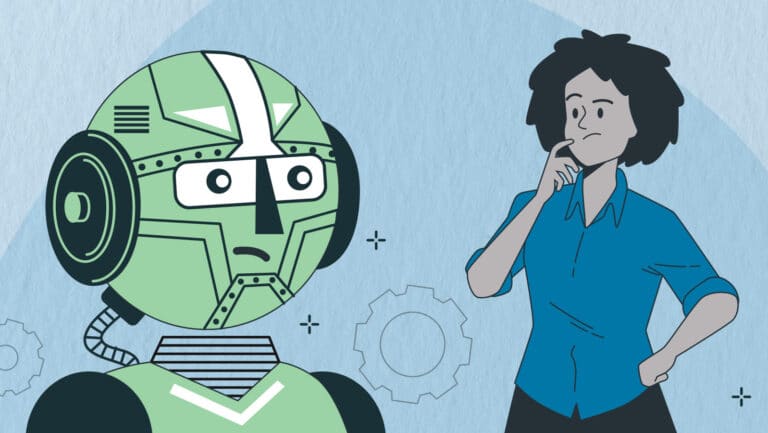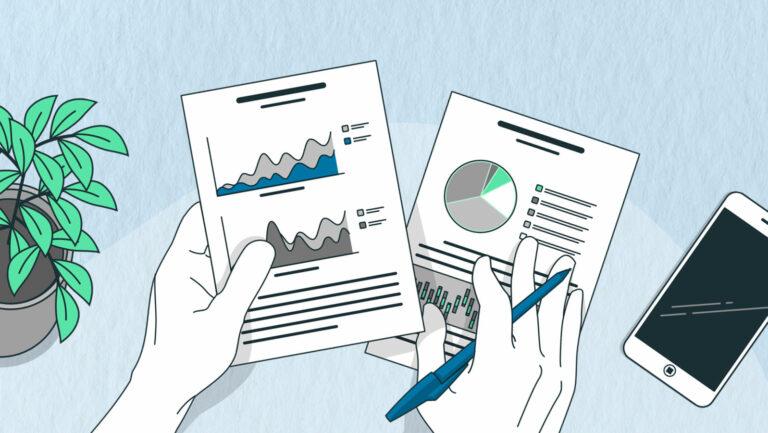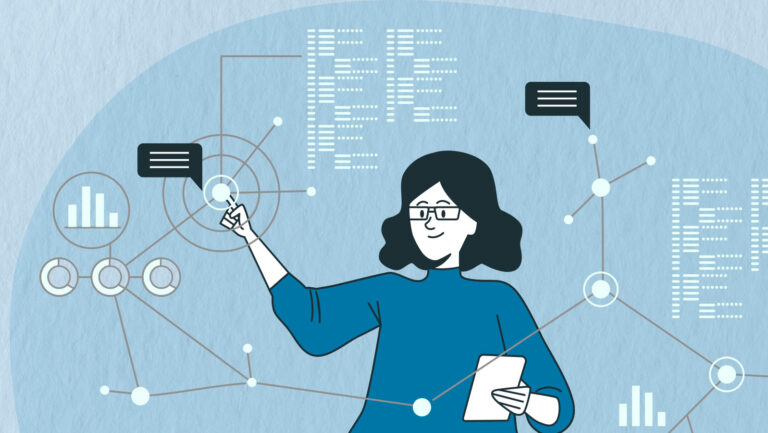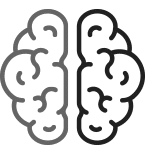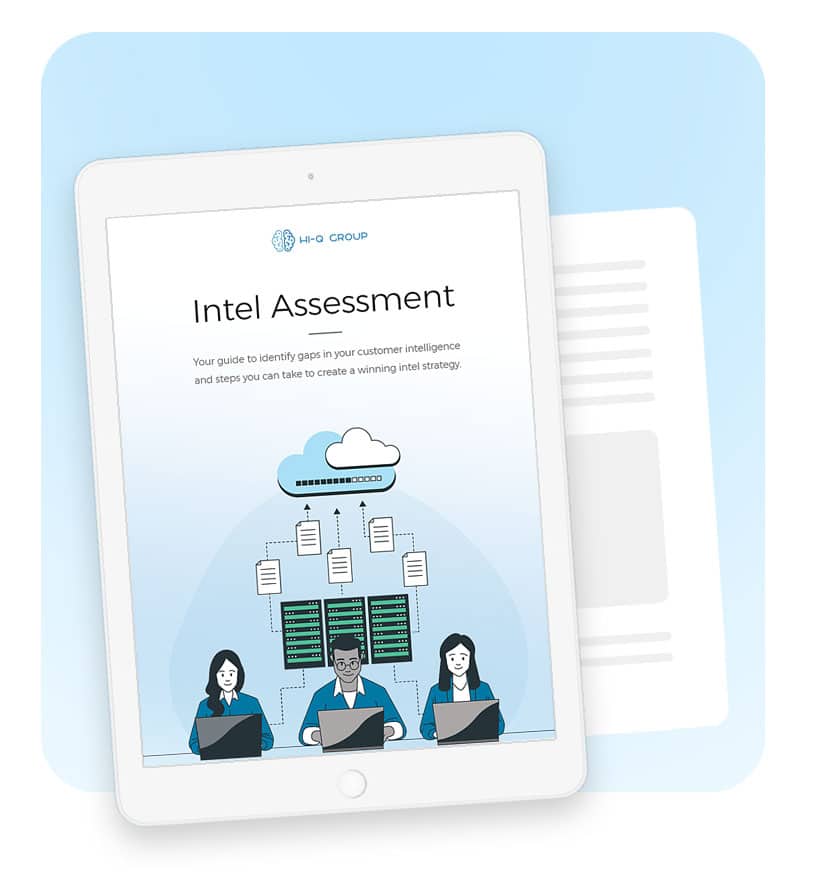RESOURCES ⇢ ORGANIC GROWTH
Customer Relationship KPI: Why Top-Performers Use CRS to Grow
While disparate customer metrics and surveys often provide fragmented, surface-level insights into interactions, CRS offers a full picture tied to revenue.

“We are surrounded by data, but starved for insights.” – Jay Baer
Your team may deliver glowing customer relationship reports, backed by impressive health scores and satisfaction metrics, but you’re most likely here because you realize these numbers aren’t lining up with your results.
You’re not alone in this realization.
In B2B and B2G, where trust drives long-term success, many organizations struggle to align reported customer-centricity with outcomes like revenue, loyalty, and growth.
The reality is these numbers don’t tell the whole story and often reveal a significant gap in addressing customer connection and intimacy.
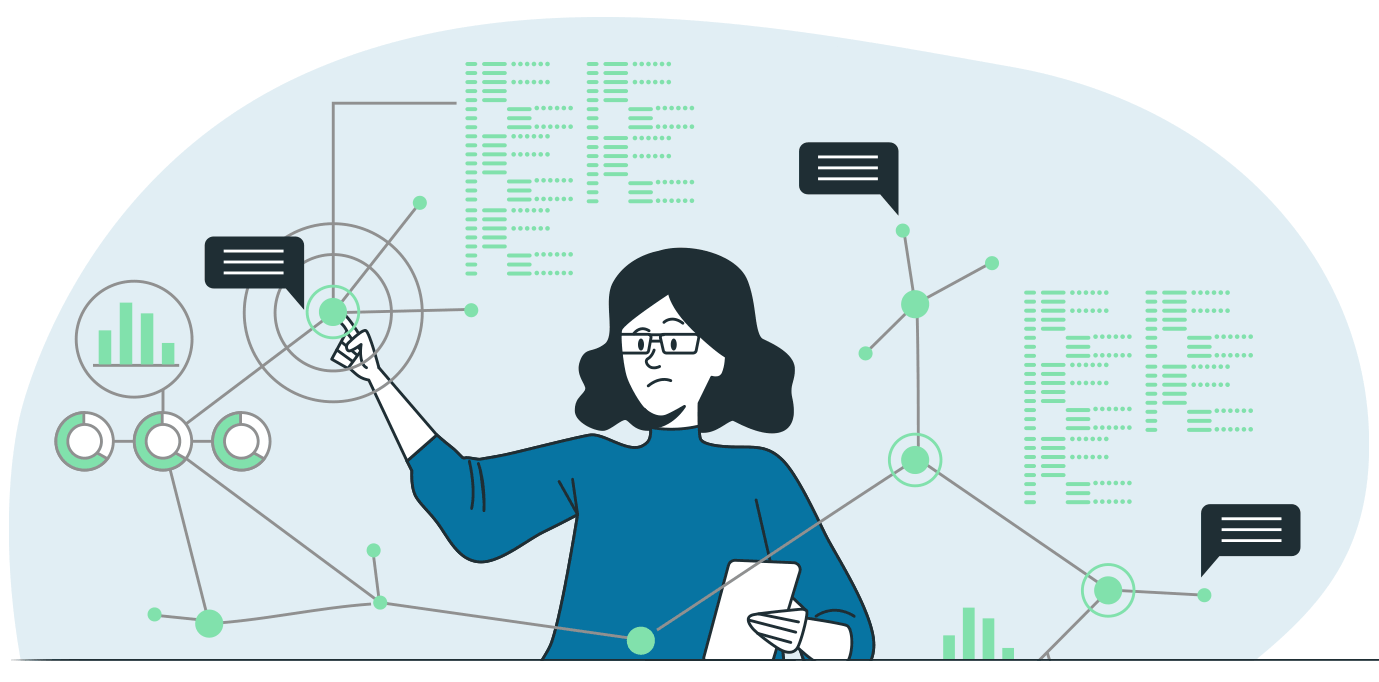
Understanding your customer relationship quality is a critical component in any CRM strategy, which is why many of the leading customer-centric brands like Apple, IBM, Amazon, and Tesla were forced to create their own internal customer relationship score for more accurate predictions.
Shockingly, only 7% of organizations actively measure and monitor customer scores (SuperOffice), yet those that do see 24%+ higher retention rates (Forrester).
If you implement Customer Relationship Score (CRS) in your organization, you’ll position your team ahead of the 93% lagging behind.
In this guide, we’ll cover the trends of tracking customer relationships in leading customer-centric organizations, and how CRS can drive significant growth for your company.
CUSTOMER RELATIONSHIP KPI CHALLENGES
As we mentioned, you’re not the first to recognize this gap in actionable reporting.
Many organizations are leaving traditional metrics like NPS, CSAT, and even CES scores, due to weak correlations with key outcomes, limited actionability, and susceptibility to manipulation.
In response, many teams are increasingly reducing reliance or even abandoning these metrics altogether in favor of more robust alternatives:
NPS: Inflated Scores for Positive Impressions
A 2019 Satmetrix study showed that companies selectively surveying only happy customers can inflate their NPS scores by up to 20 points, misrepresenting true customer sentiment. And a Qualtrics’ 2023 XM Institute report found that 15% of organizations have stopped using NPS entirely.
CSAT: Not a Guarantee of Loyalty
A 2010 Harvard Business Review study revealed that 20% of customers who report being satisfied still intend to leave the company, suggesting that high CSAT scores do not guarantee customer loyalty. (Source: Dixon, Freeman, & Toman, 2010)
A 2022 Forrester Research survey reported that 24% of companies plan to reduce their reliance on NPS and CSAT, favoring more actionable metrics.
CES: Limited Effectiveness
Gartner’s 2019 report, “Customer Effort Score 2.0,” determined CES accounts for only about 12% of the variation in customer loyalty, demonstrating its limited effectiveness as a standalone metric.
CHS: Subjective and Often Unactionable
According to Gainsight’s 2021 Customer Success Industry Report, 40% of companies struggle to define what constitutes a “healthy” customer, highlighting the subjective and often unactionable nature of these composite scores.
Many leaders can feel blind to the reality of their customer relationship dynamics, as they are limited to fragmented metrics and shallow reports often better suited to B2C interactions.
Adding to this challenge, teams overwhelmingly overestimate their relationships positively when leaders try to dig deeper, resulting in painful surprises.
CRS (Customer Relationship Score) was designed to bridge these gaps.
CRS OVERVIEW
What if you could accurately predict revenue and growth objectives by monitoring how well your teams connect and serve your customers across your top accounts?
What if this measurement also provided a method for your team to see their customer relationships more objectively and a clear, actionable path to improve their relationships for greater loyalty, trust, intel quality, and account penetration?

That’s where Customer relationship Quality (CRS) comes in, a powerful metric that measures trust, engagement, and alignment, helping your team take the guesswork out of identifying gaps, increasing stakeholder access, strengthening loyalty, and increasing expansion opportunities for lasting growth.
For leaders who know relationships are the backbone of success, CRS offers a fresh perspective that ties every engagement to your bottom line.
By measuring real signals of trust in customer relationships, CRS allows your team to assess relationships in an objective manner that translates into results.
Because if the customer doesn’t like your team, nothing else matters.
WHAT IS CRS?
At its core, CRS reflects the strength of the partnership: how much customers see your team as a vital ally focused on their success, and not just another vendor.
❌ It doesn’t measure how often your team shares in casual conversations.
✅ It’s a deeper, more strategic measure of how much the customer values your partnership.
Customer Relationship Quality (CRS)

A measure of trust, emotional connection, and strategic alignment between employees and customers, assessed by customer-facing roles to boost win probability (PWin) and guide deeper relationships for greater loyalty and retention. CRS is used to assess and strengthen a single customer relationship or across prioritized accounts.
Customer Relationship Scores are calculated using the Hi-Q Group CRS Assessment’s objective line of questions for customer-facing roles. For more mature organizations, these assessment results are blended into a custom composite score tailored to their metrics and priorities.
WHY IS CRS IMPORTANT?
“People do business with people they know, like, and trust.”
This quote from Bob Burg is fairly popular and if you ask around, most would likely agree.
We all want to work with businesses and people we like and trust. Yet organizations continue to focus more on their solutions and technologies than their customer relationships.
Why do so many ignore this critical affect?
The problem starts at the very beginning: the definition of a “great” relationship.
When an organization doesn’t have an agreement on what makes a good vs. bad customer relationship, it can be almost impossible to measure, monitor, or improve them.
And it makes it nearly impossible to tie financial outcomes with improved relationships.
If you don’t collect the data, you’re just guessing.
This is the power of Customer Relationship Score (CRS). It’s a method to define, measure, monitor and improve your customer relationships and tie it back directly to revenue.
By assessing the relationship quality of customer-facing teams , CRS provides clear, actionable insights, helping teams across roles—from sales to delivery—focus on the relationships that lead to lasting revenue growth.
Let’s explore the 4 main benefits of tracking CRS:
1. It bridges relationships and results, creating a predictable path to organic growth.
Unlike traditional metrics which tend to focus on transactional satisfaction, CRS ties relationship quality to financial outcomes making it a cornerstone for organic growth strategies, as stronger relationships deliver competitive advantages like deeper intelligence and stakeholder access.
Traditional customer metrics track 1 of 3 aspects: engagement, perception, or outcome.
Forrester research reveals that nearly half of organizations—around 49%—track all three key customer metrics, yet a striking 65% fail to pinpoint the operational factors shaping those perceptions.
Even more revealing, about 71% don’t measure how enhancing customer experience boosts business results. (Forrester CX Survey, 2021).
CRS is unique because it bridges interaction, perception, and outcome metrics in a way most CX metrics do not, providing a holistic view of relationship quality and its business impact:
This makes CRS is a powerful customer relationship metric, providing long-term insights and actionable depth in operational factors, helping your organization strengthen ties with customers to increase the bottom line.
While CRS supports CRM processes, it is not a CRM metric in the traditional sense as it doesn’t directly measure operational activities within a CRM system.
Instead, it focuses on the customer’s experience, perception and alignment in the relationship, making it a CX metric that informs CRM strategies.
CRS offers a versatile way to strengthen customer relationships, whether you’re focused on a single customer or increasing connections across multiple stakeholders in key accounts.
insighT:
You can track an individual CRS score to fine-tune your approach for specific customers, or adopt a broader perspective to enhance relationships across entire accounts.
By setting a target CRS score as a Key Performance Indicator (KPI), you establish a measurable goal to gauge progress toward strategic priorities—like boosting customer retention or increasing account penetration.
The Hi-Q Group CRS framework gives actionable steps management can use to coach their teams through alignment to gain a competitive advantage, address risk mitigation, or create contract growth.
This flexibility lets you apply CRS on either an individual or holistic level, turning insights into actionable steps for lasting success.
2. It helps you identify opportunities and risks.
CRS doesn’t just measure, it guides. By tracking how CRS scores impact contract wins and growth, it drives targeted relationship-building efforts that positions your organization as irreplaceable.
A high CRS score—like a 7 or 10 on the Collaborative-to-Synergistic scale—means you’re not just a vendor; you’re a partner they rely on to guide them and co-create solutions.
These relationships are often correlated to high win rates and account penetration as your team continues to deepen all stakeholder relationships throughout the customer’s organization.
INSIGHT:
Although individual CRS scores are very useful, one great relationship doesn’t equal success. To paint a better picture, organizations combine CRS scores to understand how well they are positioned with all key stakeholders on the account.

A low score, like a -5 Adversarial, waves a red flag that you’re on thin ice.
In low CRS relationships, your team will be limited to surface-level discussions that fail to deliver insights, limited stakeholder engagement, and often miss or fail to understand evolving needs and drivers, leaving room for your competitors to connect and better address the customer’s needs.
Knowing where you stand lets your team fix what’s broken before it’s too late.
Ironically, customer challenges and conflict resolutions are the best opportunities to build trust and intimacy by working through challenges together, but most teams avoid these conversations.
Resolving complaints can lead to a 34.2% increase in customer loyalty,¹ and 83% of customers feel more loyal to brands that respond to and resolve their complaints.² Is your team confident in these conversations?
¹ American Customer Satisfaction Index (ACSI) | ² Forrester Report ’24
Teams must have guidance and coaching to push their boundaries and have the difficult conversations.
CRS score guidelines provide actionable insights and a more holistic framework than traditional metrics, guiding smarter decisions for you and your team.
3. It provides a realistic snapshot of your customer relationships.
Many organizations often prioritize price or product features, neglecting the emotional aspect of doing business with customers. They simply forget that business is a human experience.
Often companies will give employees a strategic goal of increased customer intimacy but have no measurements or incentives to support it. When they do prioritize customer KPIs, leaders only receive a snapshot of aspects of the customer journey that are either too broad or too granular.
These reports prioritize perceived short-term gains, providing leadership and their employees a limited action plan to address what can often simply be symptoms of poor customer engagement.
Adding to these challenges, studies show teams overwhelmingly overestimate their soft skills and customer relationships. “They love us!” is a phrase many leaders hear right before a significant loss, as their teams often miss subtle clues from the customer demonstrating low trust.
CRQ provides a more objective measurement, regardless of role, and shifts the focus to relational drivers to foster long-term loyalty and increased organic growth.
4. It helps you prioritize resources and measure your efforts.
By delivering a holistic view of relationship quality, CRS enables sales, business development, and all frontline roles to pinpoint accounts with the highest growth potential or those needing immediate attention, ensuring efforts are laser-focused for maximum impact.
Unlike traditional metrics that often leave teams reacting to issues, CRS’s comprehensive approach—bridging interaction, perception, and outcome data—supports proactive strategies, like nurturing promising accounts for expansion or stabilizing at-risk ones.
CEOs who prioritize customer-centricity are 60% more likely to outperform their competition. (Deloitte)
As a key performance indicator (KPI), CRS also measures the success of customer initiatives, directly tying relationship improvements to business wins like retention and revenue growth.
This makes CRS an essential tool for B2B and B2G organizations, driving smarter decisions in resource management for sustainable growth.
CRS IMPLEMENTATION
CRS scores seamlessly integrate with your CRM tools, customer success strategies, and growth plans, delivering a powerful new perspective without disrupting your workflows.
Whether you’re analyzing an individual customer, a key account, or your entire customer base, CRS provides actionable insights at every level—tracking trust and engagement in real time to help you prioritize efforts effectively.
CROs and CGOs can leverage it to pinpoint growth opportunities and mitigate risks.
CEOs gain a strategic tool where they can actively monitor customer relationship scores across all prioritized accounts to better align resources and drive growth outcomes.
CXOs and CCOs can use CRS for a clear window into overall relationship health, improving their customer experience and customer success strategies. CRS also uniquely ties customer experience initiatives directly to the bottom line, providing a path for greater CX investment from leadership.

Businesses need to constantly evaluate how they do business with people. [This training] will create a team enabled to build deep embedded partnerships that provide the business long term, sustainable and desirable results across the organization.
Review CRS scores on your terms—whether in weekly opportunity meetings, quarterly account reviews, or ongoing dashboards—making it fully adaptable to your schedule and needs.
Integrating CRS is straightforward yet transformative. By revealing hidden relationship gaps and opportunities, it strengthens customer loyalty, boosts retention, and fuels sustainable growth—all with minimal effort and maximum impact.
HOW CRS IS MEASURED
Customer Relationship Score (CRS) is measured through the Customer Relationship Quality Assessment, a tool that evaluates the trust and strategic position of an organization’s employee-to-customer relationships.
The CRS Assessment evaluates trust, collaboration and strategic alignment.
It uses observable behaviors, such as how often customers initiate contact, share needs and internal insights, co-create solutions, or act on suggestions to provide an objective picture of engagement.
CHS
How do you feel when interacting with our brand or product?
(customer survey)
CRS
How willing is the customer to introduce you to other important decision-makers within their organization?
(employee survey)
Unlike other surveys, this assessment is answered by the employee.
Sales, business development and delivery professionals with customer access complete a quick self-assessment, answering questions tied to real interactions. This data reveals how strongly customers trust and connect with the employee, and by extension, the organization.
Unlike other self-evaluations, the CRS Assessment bridges the “knowing-doing gap” in soft skills.
Many employees believe they know how to build relationships but fail to see their behaviors objectively, leading to overconfidence. They often assume their customer relationships are strong, rating them as overwhelmingly positive.

Without a clear view, this blind spot can weaken on-contract growth and revenue goals. The CRS Assessment counters that by grounding its measure in specific, observable actions, not just feelings or assumptions.
This approach minimizes subjective bias, allowing employees and leadership to gain a clear, evidence-based view of customer trust and alignment. By grounding assessments in specific, observable data points, CRS helps teams accurately identify strengths and gaps in their relationships.
This format also addresses common issues distorting customer survey results:
- Social desirability bias – customers responding in a way they believe is socially acceptable or favorable, rather than stating their true opinions.
- Voluntary response bias – critical customers will ignore surveys while others who are strongly motivated will respond, leading to an overrepresentation of certain perspectives.
- Acquiescence bias – customers will tend to agree with statements or give positive responses regardless of their true feelings.
- Survey timing bias – customer responses are often influenced based on the timing of surveys, creating temporary sentiments in time rather than overall opinions.
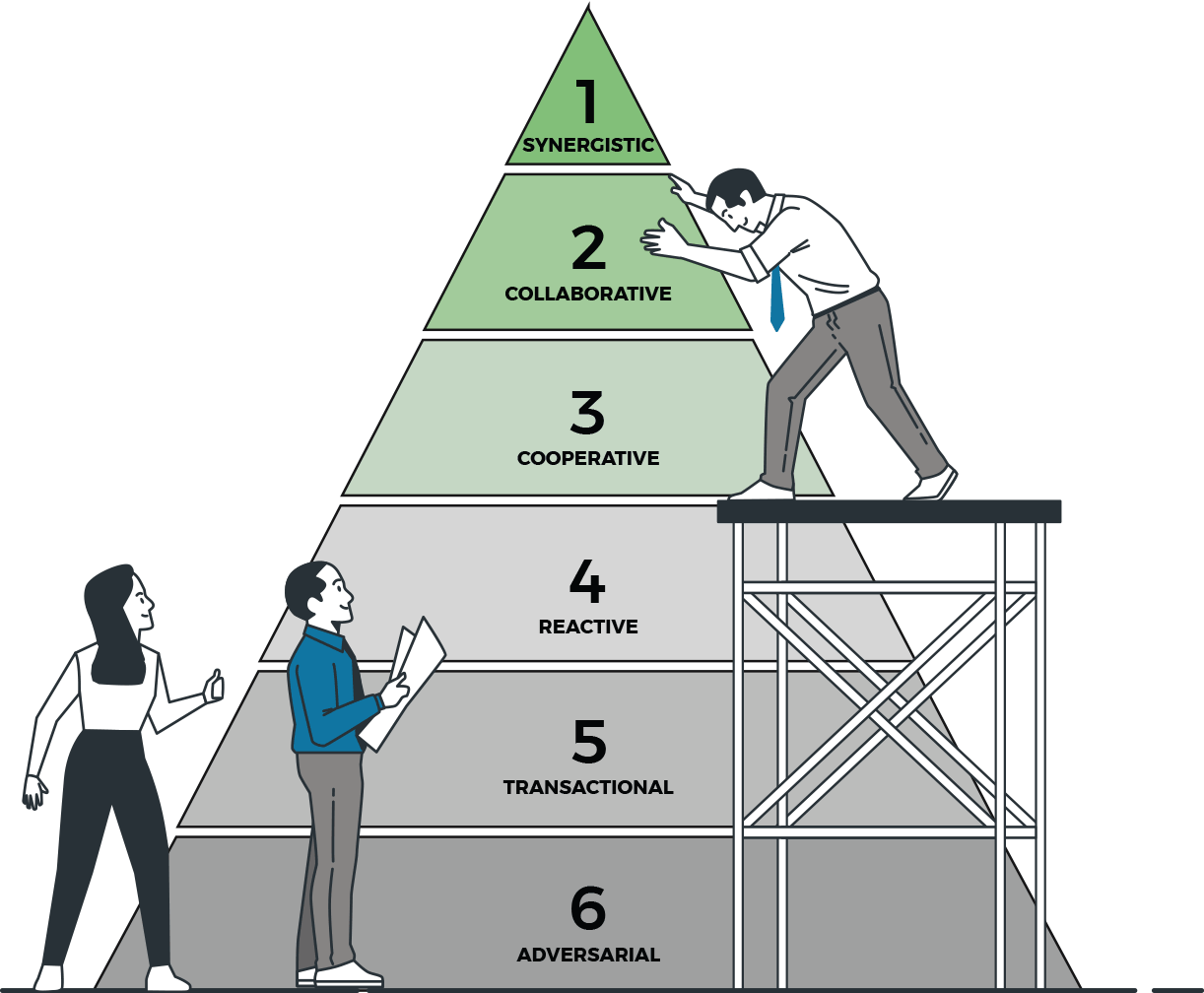
The assessment scores relationships on a scale from -5 to 10, sorted into six categories:
- Excellent / Synergistic Relationship (10): Deep trust and shared goals drive mutual success.
- Very Good / Collaborative Relationship (7): Proactive partnership with strong collaboration.
- Good / Cooperative Relationship (5): Stable and functional, with room to grow.
- Neutral / Reactive Relationship (2): Minimal, response-driven engagement.
- Weak / Transactional Relationship (0): Surface-level ties with little trust or loyalty.
- Very Weak / Adversarial Relationship (-5): Distrust and conflict threaten the connection.
Each category offers insights and action steps, giving managers a framework for coaching and actionable, clear steps for teams to improve.
HOW CRS PREDICTS OUTCOMES
Customer Relationship Quality (CRS) is a leading indicator, as it predicts future business outcomes before they appear in hard data. Unlike lagging indicators such as past revenue that report history, CRS forecasts success by measuring trust, engagement, and alignment with customers.
A strong CRS today shapes key performance indicators (KPIs) of tomorrow, giving your team time to adjust and preventing competitors from using your weak relationship as an opportunity to take away your business.
CRS influences a broad set of metrics, including:
Revenue and Growth
- Revenue and Growth Analysis
- On-Contract Growth
- Customer Lifetime Value (CLV)
- Expansion Revenue
- Net Revenue Retention (NRR)
- Gross Retention Rate (GRR)
- Annual Recurring Revenue (ARR) Growth
- Cross-Sell/Upsell Success Rate
Win and Pipeline
- Probability of Win (PWin)
- Capture Rate
- Change Order Win Rates
- Recompete Win Rate
- Win Rate (Overall or by Opportunity Type)
- Qualified vs. Unqualified Pipeline
- Pipeline Velocity (or Sales Cycle Time)
Relationship Quality
- Client Satisfaction
- Net Promoter Score (NPS) or Referral Rate
- Customer Health Score (CHS)
- Customer Effort Score (CES)
Operational and Efficiency
- Financial Oversight and Compliance
- Return on BD Investment
- Retention Rate of BD Personnel
- Cost of Customer Acquisition (CAC)
- Churn Rate
- Employee Engagement
Tracking CRS ensures you realize the full potential of your customer relationships, turning trust into tangible results across these metrics.
This is a critical advantage in an increasingly relationship-driven market.
HOW CRS DELIVERS A COMPETITIVE ADVANTAGE
A high CRS across multiple stakeholders provides a strong, competitive advantage.
Your team will have a deep understanding of your customers’ needs, priorities, and constraints, enabling you to build trust and alignment that competitors struggle to match.
Imagine customers calling your team proactively for advice, meetings where customers ask for help to co-create solutions or navigate challenges, and customers who can’t imagine working with anyone else.
High CRS organizations have a strong competitive advantage above the competition.
A High CRQ Provides:
- Competitive Differentiation Through Trust: Deep trust and credibility make you the preferred partner, setting you apart in bids, recompetes, and long-term partnerships.
- Stronger Customer Loyalty and Growth: Customers stay with you as a valued partner, driving repeat business, contract extensions, and a growing pipeline over time.
- Proactive Risk Mitigation: Objective insights into customer hesitations or challenges allow you to address issues early, protecting deals and growth opportunities.
- Actionable Customer Insights: Richer understanding of budgets, trends, and priorities sharpens your strategy and positions you to outperform rivals.
- Greater Influence on Decision-Makers: Strong relationships grant access to key stakeholders, enhancing your ability to guide decisions in your favor.
- Expanded Organizational Access: Deeper ties open doors to exclusive meetings, plans, and opportunities, giving you an edge others can’t reach.
- Increased Functional Collaboration: Sales, delivery, and all customer-facing roles can effectively leverage existing relationships and share critical information to collaborate on growing accounts, market expansion and other growth opportunities.
FACTORS THAT AFFECT CRS
The Hi-Q Group CRS Assessment measures this through specific skills and behaviors that shape the strength of those relationships. These factors determine whether a relationship thrives as Synergistic (10) or struggles as Adversarial (-5).
Below are the key elements that affect your team’s CRQ score:
- Customer Engagement Skills: The ability to connect meaningfully with customers. This includes active listening, clear communication, and responding effectively to their concerns or ideas. Strong engagement turns routine interactions or even disagreements into trust-building moments.
- Frequency & Depth of Engagements: How often and how deeply employees interact with customers. Frequent, proactive contact—beyond just transactions—combined with substantive discussions about needs or goals, signals a committed relationship.
- Customer Understanding (Priorities Alignment): Knowing what matters to the customer and aligning efforts to match. This means grasping their mission, challenges, and objectives, then tailoring solutions to fit, showing they’re more than just a number to your team.
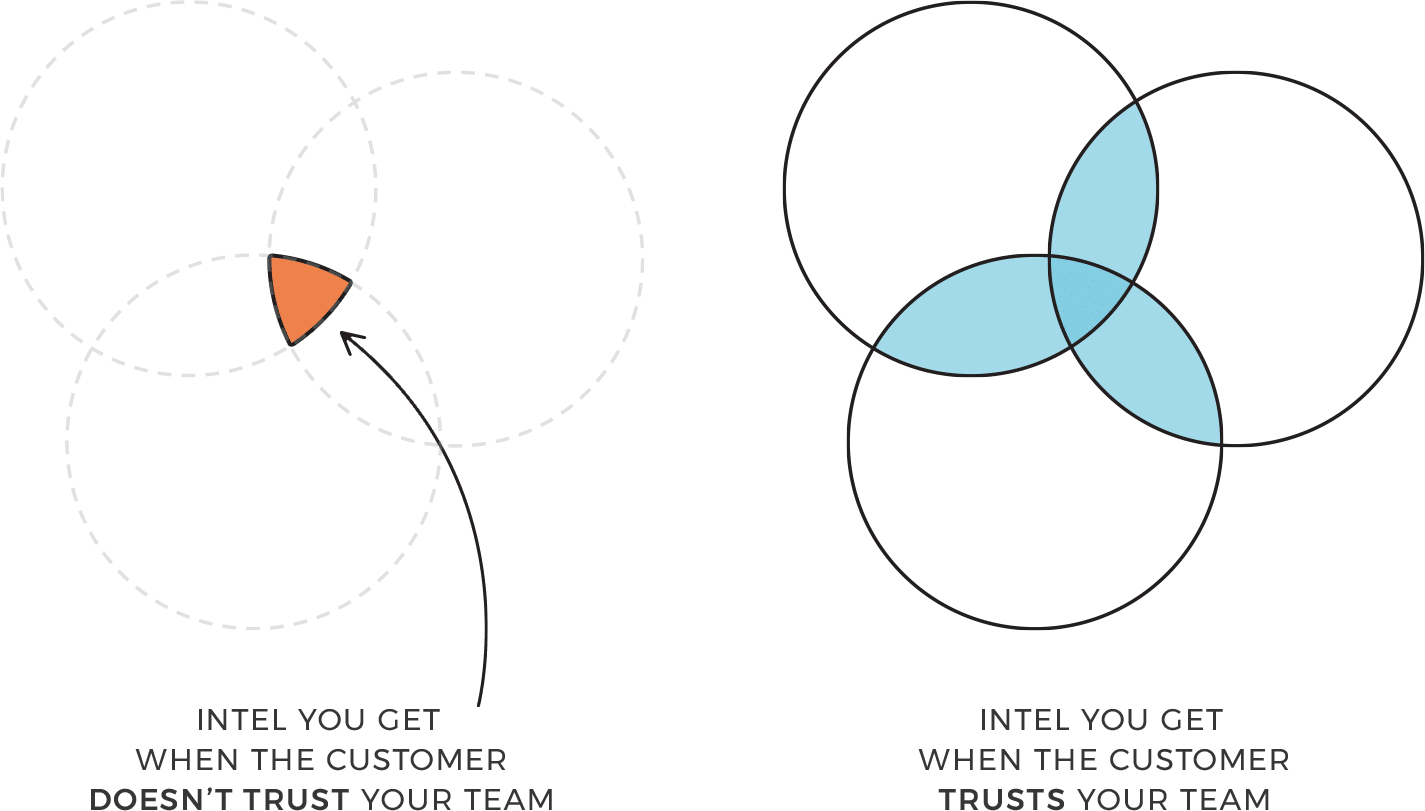
- Customer Expectations Management: Setting and meeting realistic expectations. This involves delivering on promises, addressing issues promptly, and ensuring customers feel confident in the employee’s reliability and follow-through.
- Customer Interaction Outcomes: The results of employee-customer exchanges. Positive outcomes such as customers acting on recommendations, sharing sensitive information, or collaborating on solutions—reflect trust and partnership.
- Level of Customer-Centricity: Putting the customer’s needs first. This shows in proactive support, anticipating their challenges, and offering value beyond the contract, fostering loyalty and openness.
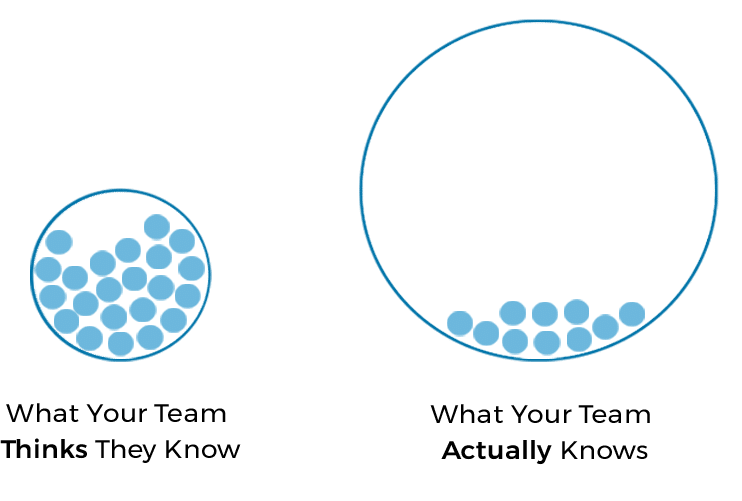
- Organizational & Situational Awareness: Understanding the customer’s broader context. This includes awareness of their industry trends, competitors, and internal dynamics/stakeholders, allowing employees to offer relevant insights and build strategic credibility.
- Collaboration & Adaptability: Working together on solutions and adapting to customer feedback or changing needs.
CRQ uncovers a critical blind spot by revealing the disconnect between employees’ perceived relationship-building practices and their actual effectiveness.
RISKS OF IGNORING CRS
“With data collection, ‘the sooner the better’ is always the best answer.” – Marissa Mayer
Without tracking the Customer relationship quality (CRQ), your organization risks continuing to operate in the dark, unable to assess the true health of your customer relationships or align operational processes with the factors that drive loyalty and growth.
Organizations are 80% more likely to win if their teams excel at customer engagement¹ and strong engagement strategies can increase their annual revenue by up to 23%².
¹ Deltek Federal Procurement Success | ² Aberdeen Group
These blind spots create critical gaps that could lead to missed signals—such as shifting customer requirements or growing dissatisfaction.
And as the saying goes, “ignorance is bliss” until you lose.
This oversight exposes you to severe consequences, including customers scaling back commitment, turning to competitors who’ve built trust you overlooked, or unexpectedly leaving, resulting in lost opportunities, shrinking revenue, and a weakened market position.
measure what matters
Winning goes beyond friendly chats, surface-level intelligence or inflated metrics.
CRS is your differentiator and growth accelerator—a critical KPI missing from many dashboards. If you’re tired of losing contracts, missing revenue targets, or struggling to align teams around customer needs, it’s time for a shift.
ASK YOURSELF:
Do we really know where we stand with our customers?

I can easily see a 10x return on this course [for my team] in the next 18 months.
TAKE ACTION:
You’ve seen your customer metrics not line up with your reality. You’ve seen the missed opportunities and gaps in customer understanding. Now, it’s time to get serious and start tracking your customer relationship quality.
Position your organization above the 93% not tracking relationship scores.
Schedule a confidential 30-minute consultation with our growth specialist to explore how adopting CRS could dramatically increase your growth.
learn more:
FREQUENTLY ASKED QUESTIONS
what are the top kpis for customer relationship management?
The top KPIs for customer relationship management help businesses track and improve relationships over a period of time.
These include:
-
Customer satisfaction score: Measures how happy customers are with your service.
-
Customer churn rate: Tracks the percentage of customers who leave within a time frame.
-
Customer effort score: A customer experience metric showing how easy it is to resolve customer issues.
-
Customer retention KPIs: Indicate the percentage of customers who stay, reflecting loyal customers.
-
Customer Relationship Score (CRS): A crucial metric of relationship health that assesses customer trust and engagement for deeper alignment and actionable insights.
These key metrics support data-driven decisions, reduce customer acquisition costs, and build a loyal customer base through effective customer management.
what is the most important kpi for business relationship management?
The most important KPI for business relationship management is Customer Relationship Score (CRS), a key metric that measures trust, engagement, and alignment in customer relationships.
CRS links these factors to business success, driving loyal customers and revenue growth over a time frame. Unlike traditional customer satisfaction scores, CRS provides valuable insights into the emotional and strategic bond with customers, helping sales leaders make informed decisions to boost customer retention KPIs. For B2B and B2G leaders, CRS is a crucial metric that turns relationships into a quantifiable measure of growth.
what is a kpi in relationship?
A KPI in relationship management is a specific, measurable goal that tracks how well your team builds and maintains customer relationships to achieve business outcomes. It focuses on aspects like trust, collaboration, or loyalty, showing the direct impact of relationships on success. For example, a KPI like Customer Relationship Score (CRS) can measure how effectively your team fosters customer trust and alignment to drive repeat business, ensuring relationships become a competitive advantage.
how do you measure relationship management?
Relationship management is measured by tracking key metrics like trust, engagement, and loyalty that reflect relationship quality. The Customer Relationship Score (CRS) assessment is an essential tool, using employee insights from interactions with customers to evaluate observable behaviors, such as how often customers share needs or act on suggestions. This customer satisfaction KPI minimizes bias, offering enhanced relationship insights into customer issues and strengths. CRS helps sales teams align with business objectives, ensuring positive experiences and sustainable growth without relying solely on customer satisfaction metrics.
what kpis should you consider using to evaluate customer relationships?
To evaluate customer relationships, focus on these customer relationship management KPIs:
-
Customer satisfaction score: A measure of customer satisfaction showing customer satisfaction levels.
-
Customer churn rate: Reveals risks by tracking the percentage of customers lost.
-
Customer effort score: Ensures positive experiences by measuring interaction ease.
-
Customer value: Estimates the worth of an individual customer over their average customer lifespan.
-
Customer Relationship Score (CRS): Provides valuable insights into customer trust and alignment.
These quantifiable measures help sales managers refine customer relationship strategies and avoid poor customer experiences.
what is a customer relationship kpi example?
A strong example of a customer relationship KPI is tracking the Customer Relationship Score (CRS) score to measure the health of your customer relationships. CRS assesses trust, alignment, and engagement, allowing you to set a target—like improving your CRS score to boost customer retention or revenue growth. This KPI helps your team focus on building relationships that deliver measurable business value over time.
why are customer relationship kpis important?
Customer relationship KPIs are important because they provide a clear, measurable way to track the health of your relationships and their impact on business success. They help your team understand how trust and engagement drive outcomes like loyalty, retention, and revenue, ensuring your efforts align with strategic goals. By focusing on these KPIs, like Customer Relationship Score (CRS), you can build stronger customer connections that fuel sustainable growth and set you apart from competitors.
which metric is based on the relationship between the revenue?
The metric most directly based on the relationship between revenue, the costs of acquiring and serving a customer, and the expected duration of that relationship is Customer Lifetime Value (CLV), which calculates the total value a customer brings over time. However, the Customer Relationship Score (CRS) offers a different perspective, measuring the strength of the relationship itself—through trust, engagement, and alignment—providing insights that help enhance CLV by strengthening customer loyalty and driving sustainable revenue growth. Together, CLV tracks the financial outcome, while CRS serves as a leading indicator to improve that outcome, giving your team a powerful tool to turn relationships into measurable business success.
what is a kpi for a client relationship manager?
A KPI for a relationship manager is a measurable goal that tracks how effectively they build and maintain customer relationships to drive business success, focusing on areas like trust, engagement, and loyalty. Common KPIs include customer retention rates, which measure how many customers stay over time, or revenue growth from existing accounts, showing the financial impact of strong relationships. A powerful option to consider is Customer Relationship Score (CRS), which assesses trust, alignment, and engagement, providing a clear metric to ensure relationships lead to outcomes like repeat business and sustainable growth, giving relationship managers a strategic tool to enhance their impact.
what is customer relationship quality?
Customer relationship quality is the strength and health of the bond between a business and its customers, defined by trust, engagement, communication, and mutual benefit. It shows how well a company meets customer expectations, fosters loyal customers, and creates positive experiences that drive business success, such as repeat business and revenue streams. High-quality relationships reduce customer churn rate and enhance customer value, making them vital for long-term growth.
Common key metrics include customer satisfaction scores (CSAT), which measure happy customers, and net promoter score (NPS), a customer satisfaction metric reflecting customer loyalty. However, these often capture only specific moments. Hi-Q Group’s Customer Relationship Score (CRS) is an essential metric that offers a holistic view by assessing trust, alignment, and engagement through employee insights. CRS links interactions with customers to outcomes like sales figures and business growth, providing valuable insights for data-driven decisions and a competitive edge in B2B.
how to measure client relationship?
To measure a client relationship, track key metrics that reflect its quality and impact:
-
Customer satisfaction score (CSAT): Gauges satisfied customers through feedback on service quality.
-
Customer retention KPIs: Monitor percentage of customers who renew.
-
Revenue growth: Tracks average revenue from clients to show financial impact.
-
Customer effort score (CES): A customer experience metric measuring ease of resolving customer issues.
-
Net promoter score (NPS): Assesses loyal customer base via recommendation likelihood.
- Customer Relationship Score (CRS): Determines current customer relationship quality.
how to measure your client relationship strength?
Client relationship strength is measured by evaluating trust, collaboration, and loyalty through key metrics:
-
Customer satisfaction score (CSAT): Reflects customer satisfaction levels via feedback.
-
Customer retention rate: Tracks percentage of customers who stay, showing loyal customers.
-
Repeat business rate: Measures frequency of purchases by an individual customer.
-
Net promoter score (NPS): A measure of customer satisfaction indicating referral potential.
-
Customer lifetime value (CLV): Estimates customer value over the average customer lifespan.
- Customer Relationship Score (CRS): Determines current level of trust and collaboration present.
These provide valuable insights but can be fragmented. This is why Customer Relationship Score (CRS) is a crucial metric to evaluate relationship strength through employee observations of client behaviors, such as open communication or shared goals. CRS’s structured approach offers actionable insights for sales teams to align with business objectives, improve pipeline management, and create positive experiences, fostering a loyal customer base and business growth.
what are the key relationship metrics to track for a healthy partnership?
For a healthy partnership, track these customer relationship management KPIs:
-
Customer satisfaction score (CSAT): Measures happy customers and service quality.
-
Customer retention rate: An indicator of customer retention, showing percentage of renewed.
-
Net promoter score (NPS): Reflects customer loyalty and referral potential.
-
Customer effort score (CES): Ensures positive experiences by assessing ease of interactions with customers.
-
Revenue growth: Tracks sales figures from partners to gauge financial impact.
-
Collection of customer feedback: Provides valuable insights into customer issues and needs.
- Customer Relationship Score (CRS): Determines if customer relationship is healthy or at risk.
While these metrics offer basic relationship insights, they often focus on specific aspects. Customer Relationship Score (CRS) is a key metric that integrates trust, engagement, and alignment, providing a comprehensive view of partnership health. Measured through employee assessments in real time, CRS predicts outcomes like upsell opportunities, enabling sales reps to make sound business decisions and build happier customers for sustainable business success.
what tools or techniques can help measure relationship metrics effectively?
Measuring relationship metrics effectively requires tools and techniques that provide clear, actionable insights, such as surveys to gather client feedback on satisfaction, regular check-ins to assess collaboration, or CRM systems to track renewal rates and revenue growth. Techniques like reviewing shared goals or communication frequency can also reveal partnership strength. A powerful tool to consider is the Customer Relationship Score (CRS) assessment, which measures trust, engagement, and alignment through employee insights, offering a structured way to evaluate relationship health and ensure it leads to outcomes like loyalty and growth.
can relationship metrics predict long-term compatibility and success?
Yes, relationship metrics can predict long-term compatibility and success by revealing the strength and alignment of the partnership through indicators like trust, loyalty, and mutual growth. Metrics such as renewal rates, client satisfaction, and revenue growth show whether the partnership is sustainable, while frequent collaboration or shared goals indicate strong compatibility. The Customer Relationship Score (CRS) is an excellent metric to consider for prediction, as it measures trust, engagement, and alignment, acting as a leading indicator to help partners ensure their relationship drives lasting success and growth over time.
